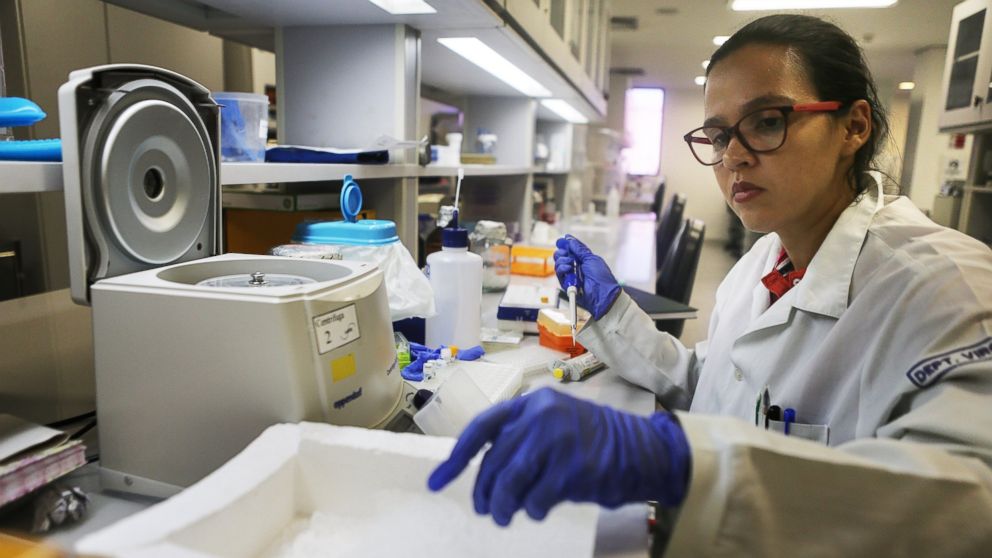How Zika Virus Research Labs in the US Handle the Dangerous Microbe
Lab researcher was infected with Zika after needle-stick this week.

— -- The Zika infection of a researcher at the University of Pittsburgh has drawn attention to the various laboratories throughout the U.S. studying the virus and how officials work to safeguard those in close contact with the pathogen.
Laboratories across the globe are currently working on various studies focused on understanding the Zika virus, a primarily mosquito-borne illness. Despite being discovered in 1947, little was known about the virus' effect on pregnant women prior to the Brazil outbreak that started in 2015 and quickly spread throughout South and Central America, leading to a rise of a birth defect called microcephaly.
To understand and hopefully help prevent the worst effects of the Zika virus outbreak, many labs U.S. are currently researching potential vaccines, diagnostic tests, and various aspects of the virus.
But these labs, where the virus is actively cultivated, must adhere to stringent safeguards to protect researchers and the public at large. Currently, only biosafety level 2 labs or higher are allowed to handle the Zika virus for research purposes. Those labs have special safeguards, including eye and face protection and specific laboratory specifications, that prevent infectious microbes from being spread to workers.
The highest level of security for a biosafety lab is a level 4, which involves "wearing a full body, air-supplied, positive pressure suit," according to the U.S. Centers for Disease Control and Prevention. In these labs, deadly, infectious microbes like the Ebola virus are studied.
The microbes studied in a BSL 2 lab pose moderate hazards to researchers in the lab and the environment, according to the CDC. Among microbes studied in BSL 2 labs are the Staphylococcus aureus bacteria, which causes staph infections.
These extra safety measures do not apply to state health departments that are currently evaluating certain blood tests for the Zika virus. However, the kind of test they are using involves breaking down the virus to its genetic material so it can't infect state health workers.
The University of Pittsburgh researcher was infected via a needle stick, according to university officials. That's a common way researchers and other medical professionals can contract diseases when treating patients or doing research on infectious diseases.
"On June 1, the individual developed symptoms indicating a possible Zika infection," university officials said in a statement. "A blood sample was collected, and a report was made to the Allegheny County Health Department (ACHD). On June 8, the University learned that the researcher’s blood sample tested positive for a Zika infection."
Dr. William Schaffner, an infectious disease expert at Vanderbilt University Medical Center, said even the safest laboratories can have accidents.
"Every once in a while something like this will happen and that can happen in any laboratory ... despite all the training that takes place," he explained.
CDC officials said they did not have a specific number of labs studying the Zika virus but that "many" were currently cultivating the disease.




